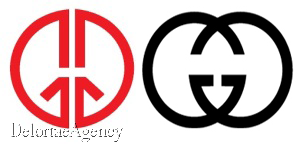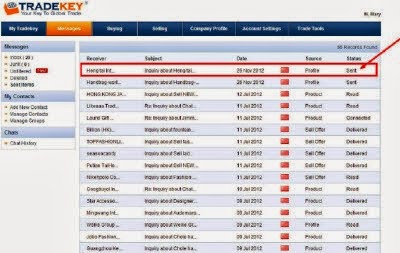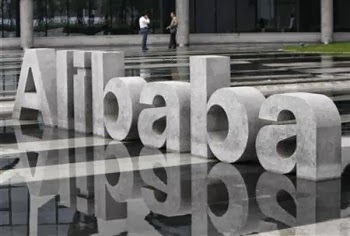
GUCCI luxury fashion house has had its GG trademark revoked after nearly 20 years on the UK register.
The trade mark application, submitted by Luke Connelly, was opposed by the Italian fashion house earlier this autumn on the grounds that the logo was too similar to the interlocking GG logo held under trademark by Gucci.
Gucci claimed there was a notable visual link between the two trademarks and it would offer an “unfair advantage” to Connelly, who submitted the trademark application to use the logo for clothing.
It was also claimed that “Gucci’s reputation may suffer damage by association with a non-luxury or low cost fashion brand.”
 |
| Connelly logo left, Gucci logo right |
The UK Intellectual Property Office (IPO) wiped away the interlocking double G logo, registered in 1984, on the grounds of non-use.
But in the decision on November 5, the IPO’s Judy Pike said Gucci can continue using the mark to sell goods (including perfumes and soaps) under class 3.
Gucci registered the GG logo in four classes – 3, 14, 18 and 25 – in the UK. Between them, the classes cover goods such as antiperspirants, watches, handbags and t-shirts.
In June 2012 Fashion rival Gerry Weber applied to revoke the mark for a lack of use, dating from 2003 to 2012.
UK trademarks can be revoked if they are not used within a five-year period following their registration.
Gucci’s response, filed by in-house counsel Vanni Volpi, was criticised by Pike for being unspecific. For example, Volpi provided figures on sales of goods in various years, but did not state whether they were UK sales.
Gerry Weber claimed Gucci’s evidence fell “far short” of the mark for showing genuine use, which “cannot be proven by probabilities or suppositions, but must be demonstrated by solid and objective evidence” when talking with DrapersOnLine.
In a 44-paragraph ruling, Pike revoked the mark covering classes 14, 18 and 25. Her reasons included Gucci submitting leather belts in its exhibits, despite class 25 expressly limiting belts to textile belts, and a lack of sales invoices.
There were, however, some invoices provided for class 3 goods, and better evidence overall to show use in this class, meaning the mark stays registered for this specification.
According to the decision, class 3 covers “Non-medicated toilet preparations, cosmetic preparations, perfumes, soaps, dentifrices, preparations for the hair; anti-perspirants, depilatory preparations”.
The decision means Gucci cannot protect the GG logo under classes 14, 18 and 25, which cover goods such as scarves and coats, in the UK.
But the hearing officer rejected Gucci’s claim on the grounds that the two logos were “visually similar only to a very low degree.”
Gucci was ordered to pay £400 towards Connelly’s legal expenses, as he represented himself.
Gucci also entered and lost lost a four year battle with brand Guess, from which it had been seeking $221m (£138m) damages on the grounds of trademark infringement, counterfeiting and unfair competition in May this year. Gucci did however, win when they were awarded 144.2 Million Dollars in Case Against Counterfeit Fake Fashion in the same year.
RELATED ARTICLES
» Gucci Awarded 144.2 Million Dollars in Case Against Counterfeit Fake Fashion
» Guess Wins Trademark Suit in Italy
For luxury authentic products and services; http://www.luxuryonlinestore.co.uk
If you enjoyed this post, please consider sharing it, leaving a comment or subscribing to the RSS feed to have future articles delivered to your feed reader.




















